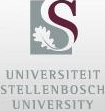Visual Redress
To promote transformation in Higher Education, Stellenbosch University’s Faculty of Medicine and Health Sciences has started moving beyond policies and focussing on implementing practical projects. At Stellenbosch University’s Tygerberg campus – home to the Faculty of Medicine and Health Sciences - transformation is an intentional and structured process of profound change of the University's places, people and programmes by means of intentional processes, practices, plans and policies.
Our campus is situated adjacent to Tygerberg Hospital and is South Africa’s first smoke-and-tobacco-free campus. Our Faculty has a diverse student body of nearly 5 000 undergraduate and postgraduate students and nearly 1 600 staff members, many of whom have been involved in the visual redress projects completed or underway discussed below.
The Preamble to the Constitution (complete)
At the Faculty of Medicine and Health Sciences, we have made it our mission to facilitate transformative life-long learning. Our values (ICARE ²) are inclusivity, compassion, accountability, respect, excellence and equity. We recognise these values in every action here at our faculty, which is why we have the Preamble to South Africa's Constitution mounted in English, Afrikaans and isiXhosa on a wall inside the Clinical Building.
The values presented to us in the South African Constitution have relevance about how we should be interacting with each other. The Constitution is a reminder of where we have come from as a nation and represents the end of apartheid and ushers in the new democracy. Click here to read more.
The Dean's Advisory Committee on Environmental Sustainability (ongoing)
With deteriorating ecosystems, the health of mankind is at risk. Future health care professionals must be trained to recognize the interdependence of health and ecosystems to address the needs of their patients and communities. Health issues related to, e.g. climate change and air pollution, are not, however, generally included in medical education. The Dean's Advisory Committee on Environmental Sustainability (DACES), along with the Faculty management team work hard to highlight the environment-mindedness way of working in a university set-up and over the past ten years has allowed the Faculty to become a member of the Global Green and Health Hospital network which shaped its agenda around the ten key issues, namely leadership, energy, water, waste, food, travel, biodiversity, procurement, building, chemicals.
Over the course of the past five years, DACES has been responsible for the placement of three-bin systems across Tygerberg campus, an outdoor gym, the formulation of environmental stewardship as a graduate attribute and a 'Mother Nature' mural in the Education building, amongst other initiatives.
The Faculty Charter (complete)
The Faculty of Medicine and Health Sciences (FMHS) Charter is a pledge to create inclusive, fair and friendly environments in every aspect of our daily interactions and is intended to assist in holding us accountable for our actions.
The Charter was developed under the auspices of the former FMHS Dean's Advisory Committee on Transformation (DACT), established in 2016. The Charter encapsulates the faculty's commitment to celebrating all forms of diversity and inclusion on the Tygerberg Campus and the cultivation of empowering environments in both the academic and clinical settings.
The Charter recognises the importance of all its stakeholders and pledges, among other things, to promote mutual respect, advance human dignity, acknowledge the lived experiences of the communities it serves, engage in ethically sound research and protect the environment. Click here to read more.
Hardekraaltjie Cemetery (in progress)
According to official records, the Hardekraaltjie cemetery was in use from 1909 until its closure in 1946. SU became the owner of the land in 1971 when the then Parow municipality transferred it to the University. The cemetery had a central place in the then Tiervlei community, which was subjected to forced removals under the Group Areas Act (1950) of the apartheid regime.
The University is currently working with a number of stakeholders, including staff and students of the faculty and the members of the Ravensmead community to determine how the site will be memorialised.
The stone outside the Clinical Building (complete)
This slate stone housed an Afrikaans inscription ''n beitel moet kan klip breek as hy 'n beitel is – N.P van Wyk Louw' outside the Clinical Building on Tygerberg campus. It is believed that this extract from the longer poem, Die Beiteltjie, attempted to capture something of the development of the faculty, or the ideology that informed it. One other interpretation of the placement of this inscription is that a small device can become an instrument that drives considerable change in the world.
As SU embraces the diversity of South African society and the intellectual wealth inherent in that diversity, it strives to advance multilingualism in academic and social spaces. To this end, the stone will be redressed with the primary objective of aligning the inscription on the stone with Stellenbosch University's principle of multilingualism.
Read more about the redress process here.
Read more about visual redress initiatives at Stellenbosch University here.

